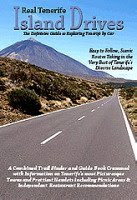 As a potential holiday destination, Tenerife is somewhat of a paradox. Millions of Brits choose it year after year because of its image and even millions more look down their noses at it for the same reason.
As a potential holiday destination, Tenerife is somewhat of a paradox. Millions of Brits choose it year after year because of its image and even millions more look down their noses at it for the same reason.It’s very easy to construct a picture of Tenerife which, although not technically inaccurate, is far from being representative of most of the island.
Community websites like TripAdvisor, Holiday Watchdog and the Tenerife based Tenerife Forum offer really useful advice to visitors and, in Tenerife Forum’s case, expat residents. However, here’s a little task. Find a map of Tenerife and draw a circle around the areas which the majority of posts focus on (usually along the coast from Costa Adeje up to Costa del Silencio and occasionally El Médano) and then look at how much of Tenerife lies outside the circle – it might come as something of a surprise.
The area which makes up the popular southern holiday resorts could probably fit into a couple of barrancos (ravines) in the remote Anaga Mountains at the north east end of Tenerife.
And yet this tiny area in geographic terms tends to hog the spotlight in relation to the island’s image in the UK. Whether it be an image of a warm and sunny version of Britain abroad populated by beer bellied lager louts, or the more acceptable shiny ‘new face of Tenerife’ with its coastline of plush, 5 star hotels.
 It’s one of the reasons we’re passionate about projects like Going Native in Tenerife which covers all areas of Tenerife, especially what we call the real Tenerife; the place where Tinerfeños (natives of Tenerife) have lived and developed a fascinating culture for over five centuries.
It’s one of the reasons we’re passionate about projects like Going Native in Tenerife which covers all areas of Tenerife, especially what we call the real Tenerife; the place where Tinerfeños (natives of Tenerife) have lived and developed a fascinating culture for over five centuries.There’s a very different island out there than people realise and the great thing is, because of the way that Tenerife has been portrayed in the media during the last 30 years, a lot of it is still waiting to be discovered.







